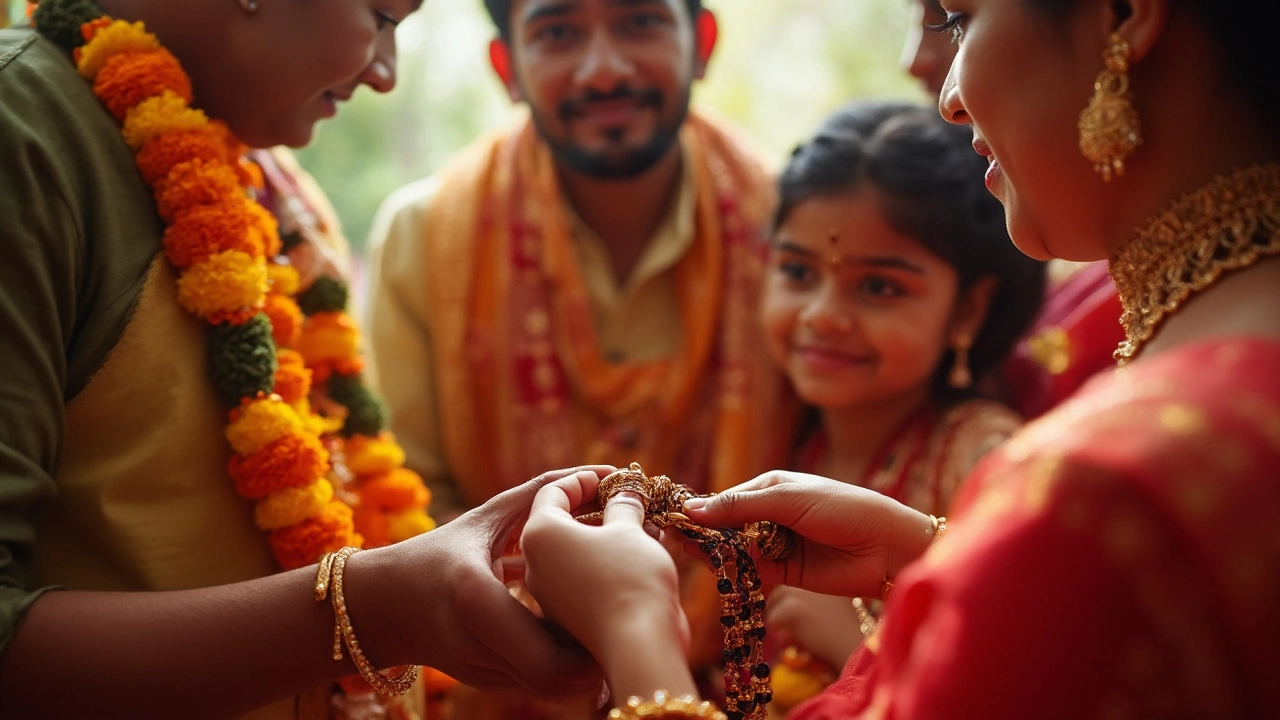Hindu Marriage Tradition: Understanding the Rituals and Their Meaning
When exploring Hindu marriage tradition, the collection of ceremonies, symbols, and customs that mark a Hindu wedding. Also known as Hindu wedding customs, it weaves together family values, regional flavors, and spiritual beliefs that have guided couples for centuries.
One of the most recognizable symbols is the Mangalsutra, a sacred necklace tied by the groom around the bride’s neck during the ceremony. This piece not only represents the marital bond but also serves as a daily reminder of mutual commitment. In many regions, the groom’s family purchases the mangalsutra, while in others the bride’s family gifts it, illustrating how Hindu marriage tradition adapts to local customs.
Key Rituals You’ll Encounter
The Choora ceremony, the tradition of gifting red and ivory bangles to the bride, symbolizes marital bliss and protection. Typically, the bride’s maternal uncle presents the choora, signifying the support of her extended family. This ritual often includes a playful “choora removal” moment later in the wedding day, highlighting the blend of solemnity and joy.
Another enduring custom is the application of Sindoor, the red vermilion powder applied to the parting of a married woman's hair. Sindoor publicly declares a woman’s married status and is believed to bring longevity to her husband. The act of applying sindoor links the bride to her new family while honoring centuries‑old symbolism.
These rituals don’t exist in isolation. Hindu marriage tradition encompasses the mangalsutra ceremony, the choora gifting, and the sindoor application, each reinforcing the others in a web of meaning. Together they create a narrative that moves from the exchange of vows to the everyday affirmation of partnership. Modern couples often personalize these elements—choosing contemporary mangalsutra designs or mixing traditional and minimalist choora styles—showing how the tradition remains flexible.
Below you’ll find a curated selection of articles that dig deeper into each ritual, compare regional variations, and offer practical tips for anyone planning a Hindu wedding today. Whether you’re curious about the symbolism behind the mangalsutra, want to know who typically buys it, or need ideas for a fresh take on the choora, this collection provides clear answers and fresh perspectives.
